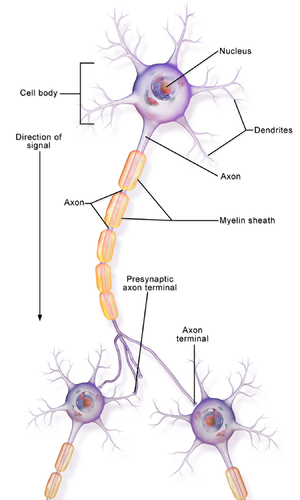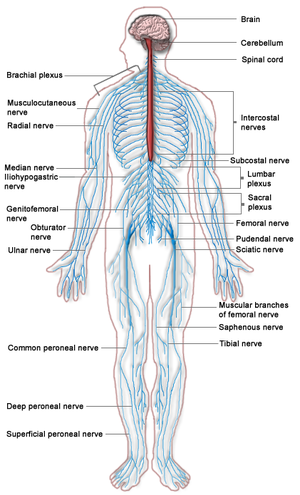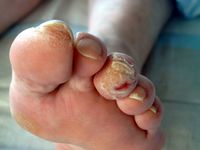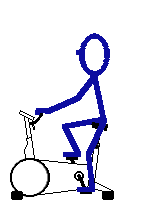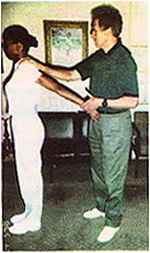Neuropathies: Difference between revisions
No edit summary |
No edit summary |
||
| Line 5: | Line 5: | ||
== Clinically Relevant Anatomy == | == Clinically Relevant Anatomy == | ||
Neuropathy is a dysfunction of one or more peripheral nerves or peripheral nervous system. [[File:Neuron Part 1.png|right|frameless| | Neuropathy is a dysfunction of one or more peripheral nerves or peripheral nervous system. [[File:Neuron Part 1.png|right|frameless|500x500px]] | ||
Neuropathy can involve damage of only one nerve (called mononeuropathy); two or more nerves in different areas, called mononeuropathy multiplex; or most commonly, many nerves are affected (called polyneuropathy)<ref>Manipal hospitals. Types of neuropathies. Available from: https://www.youtube.com/watch?v=hYVtd3hB2_w (last accessed 18.4.2019)</ref>. | Neuropathy can involve damage of only one nerve (called mononeuropathy); two or more nerves in different areas, called mononeuropathy multiplex; or most commonly, many nerves are affected (called polyneuropathy)<ref>Manipal hospitals. Types of neuropathies. Available from: https://www.youtube.com/watch?v=hYVtd3hB2_w (last accessed 18.4.2019)</ref>. | ||
| Line 16: | Line 16: | ||
* Toxins eg from toxic amounts of substances in the blood associated with kidney and liver disorders, alcoholism, chemotherapy drugs | * Toxins eg from toxic amounts of substances in the blood associated with kidney and liver disorders, alcoholism, chemotherapy drugs | ||
* Infections eg Varicella zoster virus (shingles), White Nile virus, AIDS, Lyme disease ( carried by ticks)<ref name=":0">NIH [https://www.ninds.nih.gov/Disorders/Patient-Caregiver-Education/Fact-Sheets/Peripheral-Neuropathy-Fact-Sheet Peripheral neuropathy fact sheet.] Available from: https://www.ninds.nih.gov/Disorders/Patient-Caregiver-Education/Fact-Sheets/Peripheral-Neuropathy-Fact-Sheet (last accessed 18 April 2019)</ref> | * Infections eg Varicella zoster virus (shingles), White Nile virus, AIDS, Lyme disease ( carried by ticks)<ref name=":0">NIH [https://www.ninds.nih.gov/Disorders/Patient-Caregiver-Education/Fact-Sheets/Peripheral-Neuropathy-Fact-Sheet Peripheral neuropathy fact sheet.] Available from: https://www.ninds.nih.gov/Disorders/Patient-Caregiver-Education/Fact-Sheets/Peripheral-Neuropathy-Fact-Sheet (last accessed 18 April 2019)</ref> | ||
[[File:Nervous system diagram.png| | [[File:Nervous system diagram.png|495x495px|right|frameless]] | ||
Neuropathies may primarily affect sensory nerves, motor nerves, autonomic nerves, or multiple types. Anything that damages nerves can interfere with their ability to transmit accurate signals, which can lead to a number of signs and symptoms.<br> | Neuropathies may primarily affect sensory nerves, motor nerves, autonomic nerves, or multiple types. Anything that damages nerves can interfere with their ability to transmit accurate signals, which can lead to a number of signs and symptoms.<br> | ||
| Line 29: | Line 29: | ||
* Autonomic nerve damage affects the axons in small-fiber neuropathies. Common symptoms include excess sweating, heat intolerance, inability to expand and contract the small blood vessels that regulate blood pressure, and gastrointestinal symptoms.<ref name=":0" /> | * Autonomic nerve damage affects the axons in small-fiber neuropathies. Common symptoms include excess sweating, heat intolerance, inability to expand and contract the small blood vessels that regulate blood pressure, and gastrointestinal symptoms.<ref name=":0" /> | ||
[[File: | [[File:Offene_Wunde_bei_einem_diabetischen_Fußsyndrom.jpg|right|frameless|200x200px]] | ||
An example of foot damage due to sensory loss, bottom R | |||
== Diagnostic Procedures == | == Diagnostic Procedures == | ||
| Line 38: | Line 39: | ||
'''Other tests''' ordered include | '''Other tests''' ordered include | ||
* Blood tests, checking for eg toxins, vitamin deficiencies, diabetes | * [[Blood Tests|Blood tests]], checking for eg toxins, vitamin deficiencies, [[diabetes]] | ||
* Imaging test eg CT MRI for eg tumours, disc herniation. | * Imaging test eg CT MRI for eg tumours, disc herniation. | ||
* Nerve function tests, checking nerve conduction. | * Nerve function tests, checking nerve conduction. | ||
| Line 46: | Line 47: | ||
== Outcome Measures == | == Outcome Measures == | ||
The many different presentations of neuropathies lead to a need to client | The many different presentations of neuropathies lead to a need to client specific outcome measures. Usually related to [[muscle]] strength, [[Pain Behaviours|pain]], [[Quality of Life|QOL]], and activity limitations. They include | ||
The SF-36 is a measure of health status and an abbreviated variant of it, the SF-6D, is commonly used in health economics as a variable in the quality-adjusted life year calculation to determine the cost-effectiveness of a health treatment.<ref>Wikipedia. SF-36 Available from: https://en.wikipedia.org/wiki/SF-36 (last accessed 19 April 2019)</ref> | The SF-36 is a measure of health status and an abbreviated variant of it, the SF-6D, is commonly used in health economics as a variable in the quality-adjusted life year calculation to determine the cost-effectiveness of a health treatment.<ref>Wikipedia. SF-36 Available from: https://en.wikipedia.org/wiki/SF-36 (last accessed 19 April 2019)</ref> | ||
| Line 56: | Line 57: | ||
== Management / Interventions == | == Management / Interventions == | ||
Besides medications used to treat conditions associated with peripheral neuropathy, medications used to relieve peripheral neuropathy signs and symptoms include:<ref name=":1" /> | Besides [[Pain Medications|medications]] used to treat conditions associated with peripheral neuropathy, medications used to relieve peripheral neuropathy signs and symptoms include:<ref name=":1" /> | ||
'''Anticonvulsants:''' Gabapentin; Pregabalin; Valproate | '''Anticonvulsants:''' Gabapentin; Pregabalin; Valproate | ||
| Line 68: | Line 69: | ||
== Physiotherapy == | == Physiotherapy == | ||
The main role of physiotherapy is to | The main role of physiotherapy is to | ||
* Restore, or maintain muscle strength, and prevent muscle shortening and deformity | |||
Restore, or maintain muscle strength, and prevent muscle shortening and deformity | * [[Balance]], co-ordination and functional training. | ||
* Pain relief eg provision of [[Transcutaneous Electrical Nerve Stimulation (TENS)|TENS]], [[massage]] | |||
[[Balance]], co-ordination and functional training. | * Splints as needed, prevent deformity and contractures | ||
* Education re managing conditions, preventing damage and emotional support. | |||
Pain relief eg provision of [[Transcutaneous Electrical Nerve Stimulation (TENS)|TENS]], [[massage]] | |||
Splints as needed, prevent deformity and contractures | |||
Education re managing conditions, preventing damage and emotional support. | |||
For a comprehensive guide see individual neuropathies below | For a comprehensive guide see individual neuropathies below | ||
* [[HIV/AIDS|AIDS]] | |||
[[HIV/AIDS|AIDS]] | * [[Diabetic Neuropathy]] | ||
* [[Brachial plexus injury|Brachial plexus injuries]] | |||
[[Diabetic Neuropathy]] | * [[Sciatic Nerve Injury|Sciatic nerve injuries]] | ||
* [[Cyclist's palsy|Cyclists Palsy]] | |||
[[Brachial plexus injury|Brachial plexus injuries]] | * [[Axillary Nerve Injury|Axillary nerve damage]] | ||
[[Sciatic Nerve Injury|Sciatic nerve injuries]] | |||
[[Cyclist's palsy|Cyclists Palsy]] | |||
[[Axillary Nerve Injury|Axillary nerve damage]] | |||
[[File:Axillary Extension Lag Fig 5.jpg|center|frameless|253x253px]] | [[File:Axillary Extension Lag Fig 5.jpg|center|frameless|253x253px]] | ||
Revision as of 07:01, 6 June 2020
Top Contributors - Lucinda hampton, Kim Jackson, Candace Goh, Melissa Coetsee, Uchechukwu Chukwuemeka, Merinda Rodseth, Ahmed M Diab, Sehriban Ozmen and Manisha Shrestha
Clinically Relevant Anatomy[edit | edit source]
Neuropathy is a dysfunction of one or more peripheral nerves or peripheral nervous system.
Neuropathy can involve damage of only one nerve (called mononeuropathy); two or more nerves in different areas, called mononeuropathy multiplex; or most commonly, many nerves are affected (called polyneuropathy)[1].
Mechanism of Injury / Pathological Process[edit | edit source]
The causes of neuropathies are manyfold and include:
- Physical injury eg pressure from disc herniation , pressure from a cast, trauma, arthritis.
- Systemic autoimmune diseases eg diabetes, Sjogren's syndrome, RA
- Autoimmune diseases that attack nerves eg Guillain-Barre syndrome, Multifocal motor neuropathy.
- Toxins eg from toxic amounts of substances in the blood associated with kidney and liver disorders, alcoholism, chemotherapy drugs
- Infections eg Varicella zoster virus (shingles), White Nile virus, AIDS, Lyme disease ( carried by ticks)[2]
Neuropathies may primarily affect sensory nerves, motor nerves, autonomic nerves, or multiple types. Anything that damages nerves can interfere with their ability to transmit accurate signals, which can lead to a number of signs and symptoms.
Clinical Presentation[edit | edit source]
Neuropathies may primarily affect sensory nerves, motor nerves, autonomic nerves, or multiple types. Anything that damages nerves can interfere with their ability to transmit accurate signals, which can lead to a number of signs and symptoms.
Dependant on the type of nerves affected
- Motor nerve damage will cause muscle weakness, painful cramps, fasciculations (uncontrolled muscle twitching visible under the skin) and muscle shrinking.
- Sensory nerve damage causes various symptoms because sensory nerves have a broad range of functions. Damage to large sensory fibers affects the ability to feel vibrations and touch. The client may feel as if you are wearing gloves and stockings. This damage may contribute to the loss of reflexes (along with motor nerve damage). Loss of position sense presenting with eg balance problems. The “small fibers”( without myelin sheaths ) damage affects the transmission of pain and temperature sensations which interferes with the ability to feel pain or changes in temperature. This causes neuropathic pain, which can erode a person's quality of life.
- Autonomic nerve damage affects the axons in small-fiber neuropathies. Common symptoms include excess sweating, heat intolerance, inability to expand and contract the small blood vessels that regulate blood pressure, and gastrointestinal symptoms.[2]
An example of foot damage due to sensory loss, bottom R
Diagnostic Procedures[edit | edit source]
A full Medical History (including client symptoms, lifestyle, exposure to toxins, drinking habits and a family history of nervous system (neurological) diseases).
Neurological examination
Other tests ordered include
- Blood tests, checking for eg toxins, vitamin deficiencies, diabetes
- Imaging test eg CT MRI for eg tumours, disc herniation.
- Nerve function tests, checking nerve conduction.
- Nerve biopsy, looking for abnormalities
- Skin biopsy, looking for reduction in nerve endings[3]
Outcome Measures[edit | edit source]
The many different presentations of neuropathies lead to a need to client specific outcome measures. Usually related to muscle strength, pain, QOL, and activity limitations. They include
The SF-36 is a measure of health status and an abbreviated variant of it, the SF-6D, is commonly used in health economics as a variable in the quality-adjusted life year calculation to determine the cost-effectiveness of a health treatment.[4]
INCAT (inflammatory cause and treatment) score is a measure of activity limitation
TUG; 10 metre walk test; grip strength; FSS; PSFS; oxford muscle strength scale; Romberg test.
Management / Interventions[edit | edit source]
Besides medications used to treat conditions associated with peripheral neuropathy, medications used to relieve peripheral neuropathy signs and symptoms include:[3]
Anticonvulsants: Gabapentin; Pregabalin; Valproate
Antidepressants:Amitriptyline; Duloxetine; Venlafaxine
Opioids: Dextromethorphan; Morphine sustained release; Oxycodene; Tapentadol; Tramadol.
Others: Topical nitrate sprays; Capsaicin cream
Physiotherapy[edit | edit source]
The main role of physiotherapy is to
- Restore, or maintain muscle strength, and prevent muscle shortening and deformity
- Balance, co-ordination and functional training.
- Pain relief eg provision of TENS, massage
- Splints as needed, prevent deformity and contractures
- Education re managing conditions, preventing damage and emotional support.
For a comprehensive guide see individual neuropathies below
- AIDS
- Diabetic Neuropathy
- Brachial plexus injuries
- Sciatic nerve injuries
- Cyclists Palsy
- Axillary nerve damage
References[edit | edit source]
- ↑ Manipal hospitals. Types of neuropathies. Available from: https://www.youtube.com/watch?v=hYVtd3hB2_w (last accessed 18.4.2019)
- ↑ 2.0 2.1 NIH Peripheral neuropathy fact sheet. Available from: https://www.ninds.nih.gov/Disorders/Patient-Caregiver-Education/Fact-Sheets/Peripheral-Neuropathy-Fact-Sheet (last accessed 18 April 2019)
- ↑ 3.0 3.1 Mayo clinic. Peripheral neuropathy. Available from: https://www.mayoclinic.org/diseases-conditions/peripheral-neuropathy/diagnosis-treatment/drc-20352067 (last accessed 18 April 2019)
- ↑ Wikipedia. SF-36 Available from: https://en.wikipedia.org/wiki/SF-36 (last accessed 19 April 2019)
